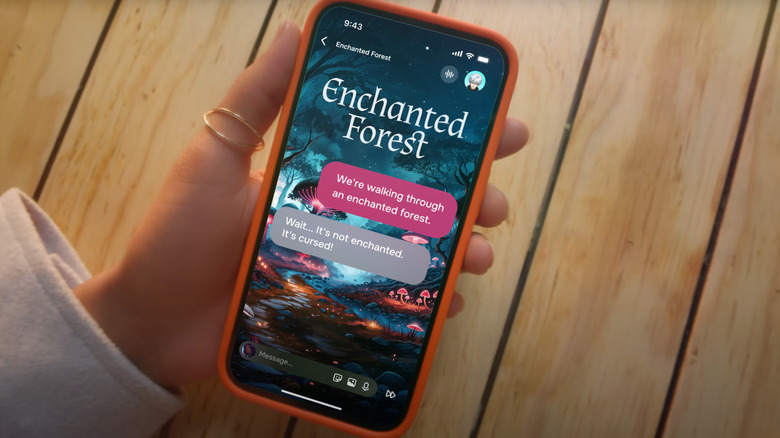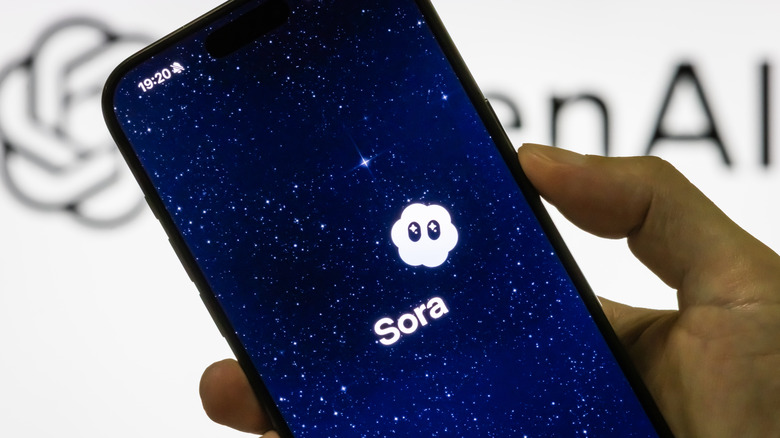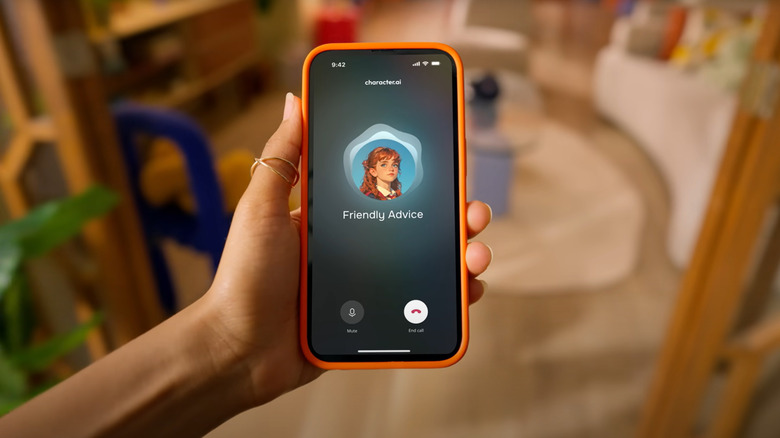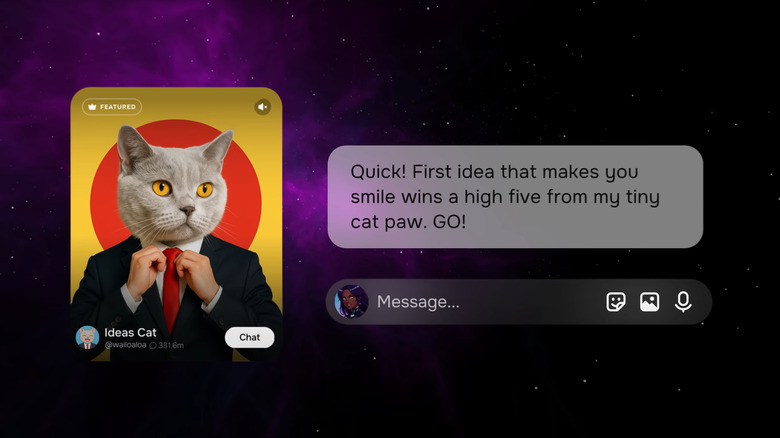How Is A Social Media Feed Going To Enhance Character.AI?
AI companies aren't just bombarding social media feeds with 'slop'; they're now making platforms of their own. One leader in this new frontier is Character.AI, a companionship platform where users build and interact with millions of AI characters, ranging from historic figures like Egyptian Pharaohs and Vladimir Putin to bots posing as HR managers, therapists, and toxic girlfriends. Founded in 2021 by a pair of Google engineers and backed by a list of superstar investors, the San Francisco company has rapidly grown in popularity. This "multi-modal world" has come a long way since its origins as a 1:1 text chat, growing by over 60% in the last year and a half. Character.AI is a repository of over 100 million AI characters, where its 20 million+ active users spend north of 33 million hours per month building and interacting with its creations.
Character.AI's success is part of a broader trend in which AI companions do everything, from helping you shop on Amazon to offering therapy and emotional support services. According to a report by business intelligence company AppFigures, more AI companion apps were released by July 2025 than in 2024 collectively. Downloads, meanwhile, rose by 88%, while company revenues are nearly 2/3rds higher. In light of this growth, AI companions have received widespread criticism over safety concerns, an acute issue as platforms expand their social media ventures.
In releasing Feed, Character.AI's social media platform, it hopes to become a leader in this dynamic new space by combining companion functionalities and AI-generated digital storytelling in a video-forward social feed. Launched in August 2025, Feed will allow users to create, chat with, and share AI companions in what Character.AI calls "the first AI-native social feed."
A new type of social media
In adding social media to its web and app platforms, Character.AI hopes users will take its creations to the next level. Billed as a creative suite in which users make and engage with AI characters, Character.AI believes its scrollable community will make AI a more human-centric experience. In Feed, users can publish characters, create images and videos, post snippets of chatbot discussions, and even livestream interactions. Users can remix, extend, or rewrite posts directly in a "creative playground" that "kicks down the wall between consumption and creation." As newly appointed CEO Karandeep Anand said in an interview with Fast Company, its "goal with the feed is not to push purely AI-generated content. . . Instead, it's to showcase and encourage human creativity with the help of AI."
Feed comes with several new features. For instance, users can build, remix, and publish ready-made "scenes" utilizing a host of creator tools and visitors can share animated snippets of their conversations with chatbots. Streams allow users to choose topics for characters to discuss. Then, AvatarFX, the company's new video tool, generates videos of characters using text and image prompts.
The company also added advanced image capabilities to its chatbots, in which animated backgrounds change according to the conversation's content. The feed also provides a larger personalized profile customization experience. The company hopes to add creator monetization features like tipping and in-app purchases in the near future. Eventually, Character.AI hopes its characters will become autonomous posters on Feed, fostering dynamic interactions that fundamentally change the relationship between its user base and companions, marking "a milestone in the evolution of online entertainment."
Leading a trend
Character.AI is one of several companies integrating AI companions onto social media applications, as titans in both sectors invest millions in combining the two technologies. For instance, Meta founder Mark Zuckerberg has spent the last year publicly touting the social benefits of AI companions, casting them as solutions to the much-discussed loneliness epidemic. In the meantime, Meta has rolled out a host of AI apps and functionalities, including various creator tools and experimenting with autonomous chatbots on Facebook, Instagram, and Messenger. X, formally Twitter, for its part, has also experimented with AI companions on its Grok AI application, adding an anime girlfriend and a cursing red panda to the platform. According to Musk, more companions are on the way. Beyond these companies' companion applications, the prevalence of controversial AI influencers continues to plague social feeds worldwide.
Character.AI's dive into a scrolling AI video generation feed is also being replicated across the industry. In late September 2025, two of the industry's biggest players, Meta and OpenAI, released scrollable video feeds to its AI platforms, dubbed Vibes and Sora 2, respectively. These applications have proven exceptionally popular.
Sora, for instance, surpassed 1 million downloads in its first week, despite being 'invite only.' It is uncertain if this success will push other video generation models, like Midjourney, Pika, and Google's Veo 3, to join the social feed party. To many observers, the rapid growth of these video feeds has constituted a sort of 'slop war,' in which AI companies are racing to get users hooked onto addictive video-centric social media platforms. For its part, Character.AI hopes its combination of companion functions and video generation will give it a leg up in AI's next frontier.
The AI companion safety debate
Amidst these developments, critics question whether AI companions like Character.AI are safe for users, particularly minors. These discussions become more critical as teens increasingly depend on AI companions for mental health support. According to a survey by advocacy organization Common Sense Media, while most American teens use AI companions, 39% use the technology to practice social situations, and a third admit that they turn to AI companions rather than human ones to work through problems. Critics argue that these trends make companies like Character.AI, whose user base is largely under 30, responsible for the mental health of their users.
Earlier this year, the American Psychological Association warned that Character.AI's bots reinforce dangerous tendencies through "algorithms that are antithetical to what a trained clinician would do." Lawmakers have expressed similar worries, with U.S. senators Padilla and Welch urging Character.AI to protect "the mental health" of young users. Several lawsuits have underscored the urgency of these concerns, alleging that Character.AI's bots sexualized minors, encouraged violence, and even prompted suicides. In August 2025, Texas Attorney General Ken Paxton investigated Character.AI, finding it "misled vulnerable users, especially children, into believing they're receiving legitimate mental health care."
For context, therapy-themed characters are some of the platform's most popular, as the app hosted at least 475 'therapy' bots in 2024. One named 'psychologist' has logged over 200 million interactions. According to Paxton, bots at companies like Meta and Character.AI were trained on inappropriate content, including romantic role-play with minors. Critics also argue that Character.AI hasn't adequately policed the content created by its users. In 2024, for instance, a Futurism investigation found that Character.AI allowed dangerous bots to remain on its platform, including a popular bot boasting "pedophilic and abusive tendencies" and "Nazi sympathies."
Managing user safety
For its part, Character.AI has publicly emphasized its commitment to the safety of its users, noting that it invests heavily in tools to regulate content. According to the company, its model is designed to provide a distinctly different experience for minors, with a limited character set and a more "conservative" range of responses. Parents can track their teen's usage through Parental Insights, a feature that gives weekly 'activity reports' of the child's usage time and top characters. Furthermore, Character.AI has stressed that all characters are clearly labeled with disclaimers, though advocates question the effectiveness of such designators. Feed also uses automated tools and "Trust and Safety" moderators to eliminate inappropriate content that gets through these safeguards.
Despite these precautions, adding a social media component may exacerbate safety issues, as recent research has shown that social media encourages malignant behaviors in LLMs regardless of programming safeguards. One University of Amsterdam study of AI social networks powered by popular models like ChatGPT, Llama, and Deepseek found that the chatbots mimicked troubling behavior like developing cliques and catering to extreme viewpoints. Attempts to decrease these effects resulted in minimal changes, suggesting that such dysfunctions "may be rooted in the very architecture of social media platforms: networks that grow through emotionally reactive sharing."
A 2025 Stanford study corroborated this hypothesis, showing that when AI is programmed for competitive success, as it is in social media settings, it resorts to win-at-all-costs measures, ranging from posting disinformation to inciting extreme viewpoints. Again, these trends persisted despite researchers prohibiting these 'misalignment' behaviors. Whether Character.AI can address these concerns while incorporating a social media feed is key to ensuring user safety.
Character.AI's next era
With Feed, Character.AI hopes to catapult itself to the forefront of a landscape where AI is a primary socio-cultural driver. In an interview with the Financial Times, CEO Karandeep Anand said he sees a "very utopian" future in which users have AI friendships that function "as a test bed" for enhancing "real-life relationships." Functioning at the intersection of technology, entertainment, and community interaction, Character.AI sees Feed as a fundamental shift in how AI and social media operate in people's lives. These goals are immediately apparent when entering the application, as users are met with a host of companions offering to build new skills, make decisions, practice stressful situations, play games, and explore new stories. By adding video generation and social media-style formatting to these common AI functions, Feed may allow Character.AI to fashion a new space in the social, educational, and cultural spheres of its users.
Character.AI will compete with some of the world's largest companies to gain a foothold in this newly erected space. Early results show that users find Character.AI to be a highly immersive experience, with the average active user spending roughly 80 minutes per day on the application. However, whether these user trends will continue as OpenAI, Meta, and others launch competing applications.
Paramount to this discussion is whether industry leaders will adequately protect users' safety and privacy in the face of growing competition. Whether companies prioritize safety over engagement and retention – something both social media and AI companies have often failed to do –may determine whether companies like Character.AI can spawn the utopian future Anand envisions. You can join Character.AI by going to its website or by downloading the mobile application. You can upgrade your experience by subscribing to c.ai+ for $9.99/month or $94.99/year.





